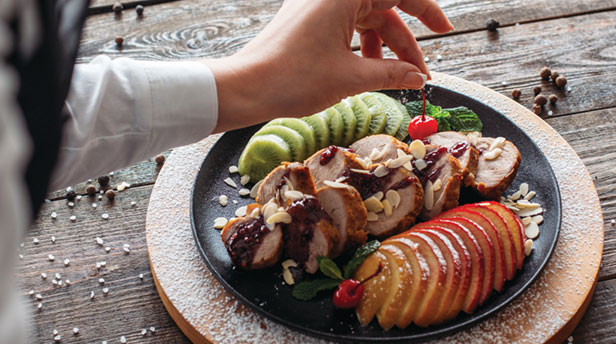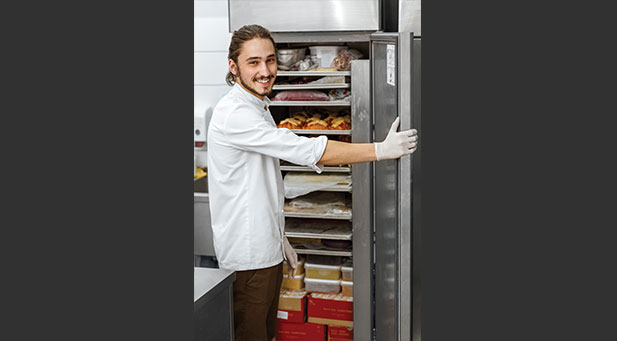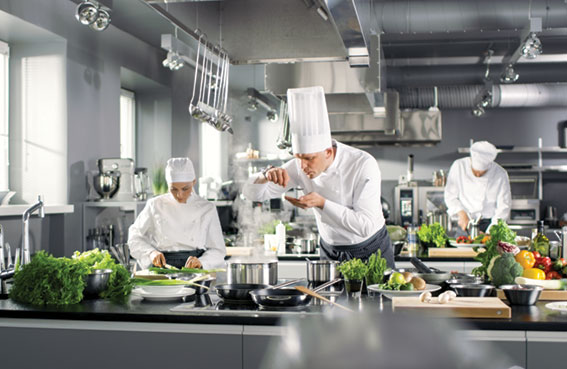To keep pace with guests’ need for an elevated dining experience, hospitality companies are using tableware to re-imagine how they present their culinary creations
By Pradeep Suvarna
Imagine yourself enjoying a meal in your favourite restaurant. There are some details that you can recall days later and they bring a smile on your face; and in all probability it is not just the food and beverages.
Increasingly, guests are paying closer attention to other elements in a F&B outlet. While the food still remains the star and the start of the experience, other aspects like décor, lighting, music and tableware play a very important role in the overall dining experience.
Like Abhishek Bindal, VP, operations, KA Hospitality explained, dining today is not just about the taste of the food; it is a sensory experience where all the fives senses are involved. Hence, tableware plays a very critical role in keeping pace with guests’ evolving tastes and change preferences when it comes to dining.
“According to us, the colour of the plates should complement the cuisine to add to the visual experience. This colour and shape enhances the food along with the right kind of lighting. The glassware should not be very heavy, should have a thin rim and should not be chipped so the guests can easily hold the glass and while sipping the glass surface should be smooth to the lip,” Bindal added.
The selection of tableware also defines the restaurant’s concept, and hence becomes a crucial part in concept dining. For instance, a typical all-day dining restaurant is liable to have a clutter free set-up, while a speciality restaurant will opt for premium tableware and glassware based on a specific theme.
When it comes to selecting tableware Bindal explained that it also depends on the nature of the restaurant and the type of cuisine served. For instance, since one of KA Hospitality’s brand, Yauatcha is a Chinese dim sum teahouse, only chopsticks and a small plate are placed on the table. The layout is very minimalistic, allowing the guests to enjoy more of the dim sum and allows the restaurant to use the space to keep the dim sum baskets. The plates are shaped like clouds that are meant to represent the tea patterns since it is a teahouse.
“At Hakkasan, the table layout is more elaborate with a plate, bowl, cutlery and chopsticks since it is a fine-dine restaurant and our guests are looking at a wholesome dining experience. At Nara, we only place fork and spoon at the table. The fork and spoon are heavier than the ones found at other regular restaurants as they your primary tools – to break open your crab, the fork on the left is used to transfer the food / sauce / curry to the spoon on
the right, etc. There is no knife placed at the table. At CinCin, we have a diverse menu of different shapes and textures, hence we place sharing plates along with knife, spoon and fork on the table,” Bindal elaborated.
TABLEWARE AS CANVAS
Hospitality companies have realised that tableware is key to the design and branding of a venue. And they are using tableware innovatively to give a contemporary twist in elevating the dining experience of their guests. The right choice of tableware not only influences the guest but also inspires the chefs, as it gives them the tools to present food impressively, keeping in mind the design ethos of the F&B outlet and the brand.
Hyatt Regency Lucknow picked up organic colourful tableware for its Asian restaurant, which has given the outlet a unique identity. “We locally sourced platters from the vicinity which are used during breakfast to uplift the look and feel of the buffet. Our Bar has a variety of glass selection for different drinks out of which we have procured copper glasses again from one of the copper hubs of Uttar Pradesh that is directly in sync with the bar theme,” said Pereira.
Indore Marriott Hotel has chosen a colour blend that reinforces the brand values and also complements the interior design. “We have golden shades in the lobby and we serve tea or coffee in gold coated cup and saucer for our guests,” said Chanda.
Taj Aravali Resort & Spa, Udaipur is still in the pre-opening stage, so Saini has the luxury of choosing appropriate tableware that can complement the property’s theme and food philosophy, while also ensuring it is elegant and user friendly. “Banquet crockery is meant to be lighter and convenient for all guests to carry when engaging in a buffet-dining experience. For instance, our regional cuisine would be served in something, which is very local and relates to the place and people,” he revealed.
Talking about the role that a chef plays in this entire process, Anup Gupta, executive chef, Taj Aravali Resort & Spa, Udaipur added that usually a deep dive into the concept is required every time the menu needs a change or upgradation to incorporate the seasonal ingredients. “Normally complete change of tableware is not encouraged. The chef works in a way that the changes are well considered and accommodated in the most smart way to ensure and maintain the welcoming settings,” he added.
PICK AND CHOOSE
When it comes to procurement of tableware, other than the nature of the establishment and the cuisine served, as well as the aesthetics of the tableware, an important aspect that hospitality companies consider is its cost and continual supply in the future.
In addition to this, different outlets in the same hotel have different requirements. Elaborating on this, Chanda said, “For banquets, the tableware has to sturdy and non-crystal glassware. This is because at banquet events, its usage is often rough as it ends up in the hands of many people. Also the theme has to be simple to match all types of decorations and functions. This type of crockery should always have round edges for safety and should have composition of alloy.”
For restaurants, the tableware can differ based on the outlet’s theme, ambience and clientele. For instance, for a buffet at an Asian restaurant, white crockery in light tone is ideal. For in-room dining, the crockery should be of composition material, which controls the food’s temperature so that hot food stays hot and the cold food stays cold.
Walter Pereira, F&B director, Hyatt Regency Lucknow agreed with Chanda and said, “For the events spaces, while we want durable and food-grade compliant products, we opt for those that offer better value for money, and are stylish as well. For F&B destinations, we choose trendy, colourful, food grade compliant, durable, and customer friendly products that in some cases evoke a ‘homelike’ feel.”
Alok Anand, F&B manager, Four Points by Sheraton, Vashi simplifies matters by breaking things down to Front of the House and Back of The House. In the former, he said there are three major aspects – mood, experience and presentation. “Tableware assists in setting the mood and can reinforce the restaurant’s theme. Aside from the food, table settings can greatly influence how customers will evaluate their dining experience. And lastly, China acts as a canvas for a chef’s culinary presentation. Attention to detail when plating can make a big difference next to your competition,” he said.
Similalry, when it comes to back of the house, factors like sanitation, durability and storage are critical. “A 100% vitrified product prevents cracking, which can accumulate bacteria, keeping it clean. Under durability, for your tableware to withstand the rigors of commercial foodservice use, it is important to research the durability of each vendor’s products, including the ability to be used in the oven, dishwasher, or microwave. And lastly, it is vital to choose stackable dinnerware, which can be beneficial to saving space in your kitchen.
Sunil Saini, F&B manager, Taj Aravali Resort & Spa, Udaipur has seen a steady decline in the age old Electro Plated Nickel Silver (EPNS) cutlery due to maintenance issues. “The mantra now is stainless steel and stoneware,” he added.
Anand pointed out that bespoke crockery and tableware seem to be the trendsetters these days since it gives a personalised touch by embossing the logo of the restaurant. The customisation can further be tweaked to help enhance the overall feel and look of the restaurant. “Earlier, Chinaware was commonly used, but restaurants now have started to experiment with stoneware, clay crockery, granite slates and metal ware. The visual appearance of crockery and cutlery used in a restaurant plays a crucial role and helps improve the overall presentation of the food served, which thus leads to customer satisfaction and helps generate more revenue.”
While Pereira too picked up artisanal tableware for Hyatt Regency Lucknow from the vicinity, it was evident that this was not a commercially viable proposition, despite the fact that it did enhance the look and feel of the food.
There are currently more than 180 million posts on Instagram tagged with ‘food’, which underlines the importance of having appealing tableware. While chefs are innovating with cuisine, they are paying close attention to tableware; sometimes almost as much as the recipe and the taste of a dish. After all, if they can impress their guests with the presentation of the dish as much its flavour, then the snap- and tap-happy digital natives visiting their precincts will act as their default digital marketing agents.







